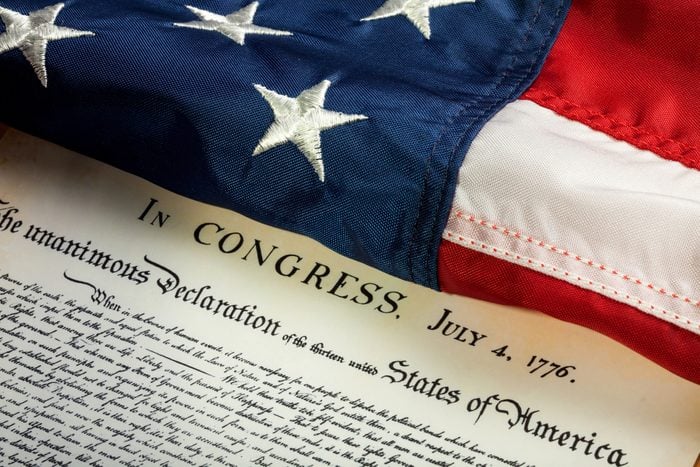
How many of these Declaration of Independence facts do you know?
As the 4th of July nears, Americans may be curious about the interesting history and trivia surrounding the holiday. Many people know the gist of it: It’s the day that commemorates the American colonies declaring independence from Great Britain. Founding Fathers and revolutionary leaders signed the Declaration of Independence (which is different from the Constitution), a pivotal historical document that not only declared the colonies free of English rule, but also established a foundation for the future American government. It’s one of the most, if not the most, important documents in American history—and as such, there are plenty of facts about the Declaration of Independence to learn.
If you’re looking to impress your history buff pals at this year’s Independence Day barbecue, read up on these interesting Declaration of Independence facts. Then, bookmark these 4th of July quotes to share in celebration of America’s birthday.
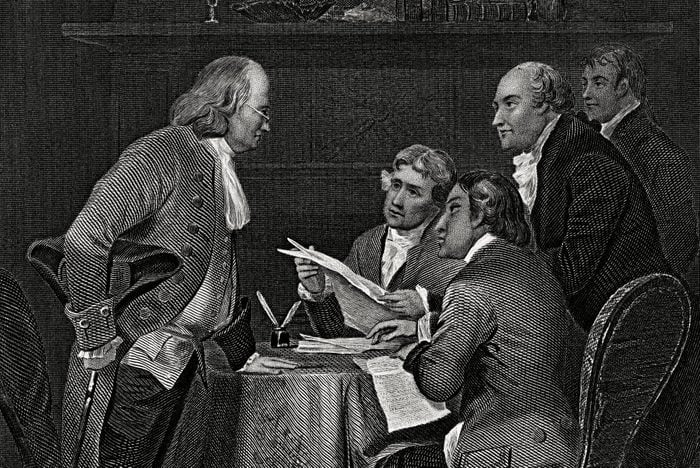
The Continental Congress declared its freedom from Britain on July 2, 1776
If you think the U.S. declared its independence from Britain on the 4th of July, think again. The Continental Congress officially declared its independence from Great Britain on July 2, 1776.
On July 4, 1776, once the delegates had prepared an explanation to the public, the Declaration of Independence was read in each colony and adopted by Congress. In keeping with the tone of democracy, America now celebrates its independence on the day it was officially declared to the people: July 4th. Before Independence Day comes around, here’s what to know about July 4th fireworks.
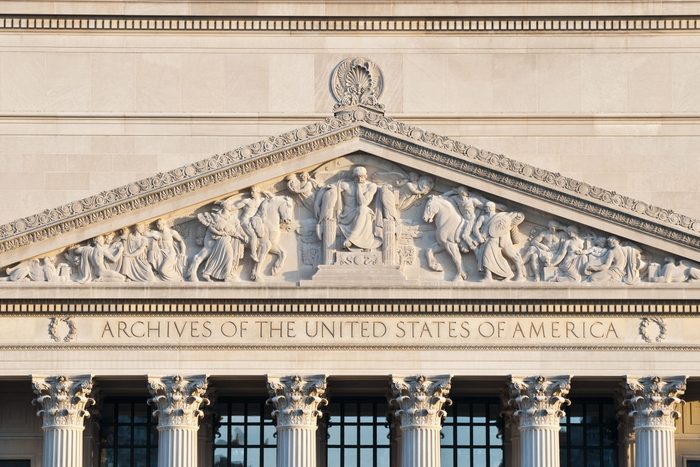
26 copies of the original Declaration exist today
Originally, Congress ordered 200 copies of the Declaration of Independence from a printer named John Dunlap. On July 5, 1776, these copies were distributed to various assemblies, conventions, committees, and leaders of Continental battalions. However, only 26 of the original copies of the Declaration are still in existence today. The most prominent one lives in the National Archives, where it has been framed, protected, and displayed for public viewing.
As for the other 25 copies? When these documents are discovered, and labeled with multi-million dollar price tags, they circulate among the highest bidders. In 2000, TV producer Norman Lear purchased a Dunlap copy for $8.14 million—a bit pricier than a history textbook!
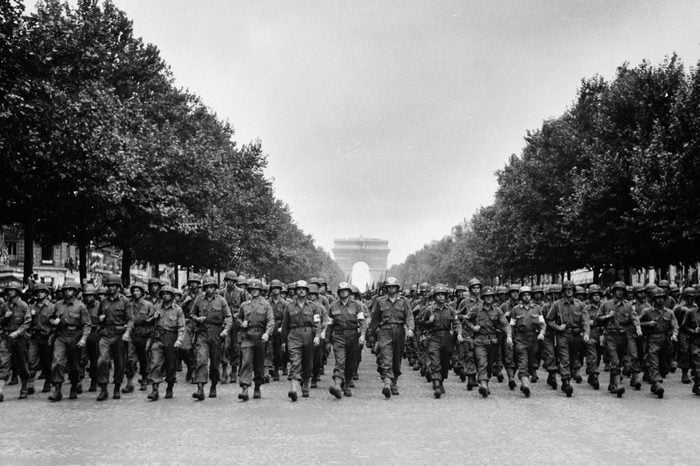
The U.S. hid the Declaration of Independence during World War II
Although the Civil War was fought on American soil, it was during World War II that leaders of the United States were more fearful for the Declaration’s safety. Following the Pearl Harbor bombing in 1941, President Franklin D. Roosevelt recognized the potential for the Axis powers to bomb the U.S. capitol. Therefore, FDR gave the order for important founding documents, including the Declaration of Independence and the Constitution, to be secretly relocated. In December 1941, the documents, under heavy security, were transported to the army base Fort Knox until the end of the war.
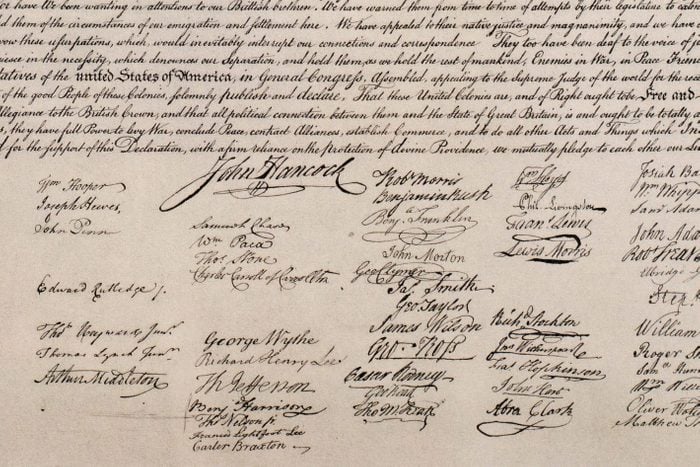
Robert Livingston, a co-author of the Declaration of Independence, did not sign it
Talk about a missed opportunity! Robert Livingston was a New York delegate, fervent patriot, and a member of the Committee of Five, which spent days drafting the Declaration of Independence. After countless hours of debating, Livingston was ultimately unable to sign the document. Although Livingston strongly supported the fight for freedom, he refused to sign the document before New York had formally instructed its delegation to do so. When the Declaration was completed—and the members of Congress passed a quill around the historic paper—Livingston returned to New York to seek approval, missing his opportunity to sign. Want to feel patriotic? Browse through these American flag pictures.
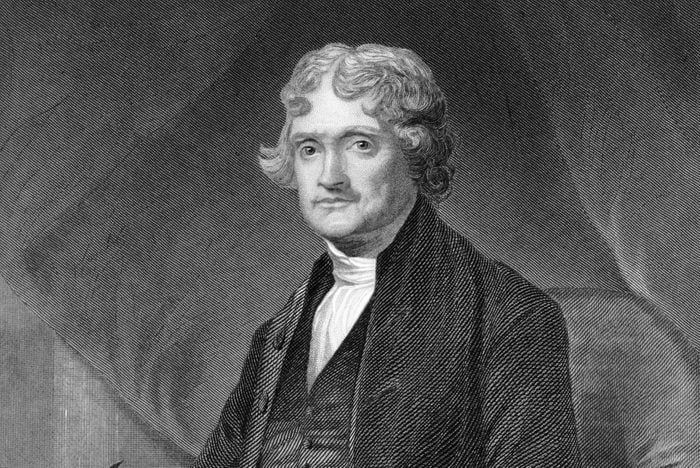
Thomas Jefferson physically wrote the Declaration of Independence
Most of us can sympathize with the pressure to produce perfection. Remember the grade-school feeling of 20 sets of eyes burning into your back, waiting for you to make a mistake when the teacher made you take notes on the board? If we multiply this feeling by a million, we can almost understand how Thomas Jefferson must have felt when John Adams tasked him with writing the Declaration of Independence. It took Jefferson 17 days to write the document.
In a letter to a friend, John Adams recalled a conversation he had with Jefferson in which they each proposed that the other write the document. Clearly, Adams’s case was more compelling. When the Committee of Five gathered to declare America’s independence, Jefferson held the pen that changed the course of history. Don’t forget to bookmark this list of great 4th of July movies to stream on Independence Day.
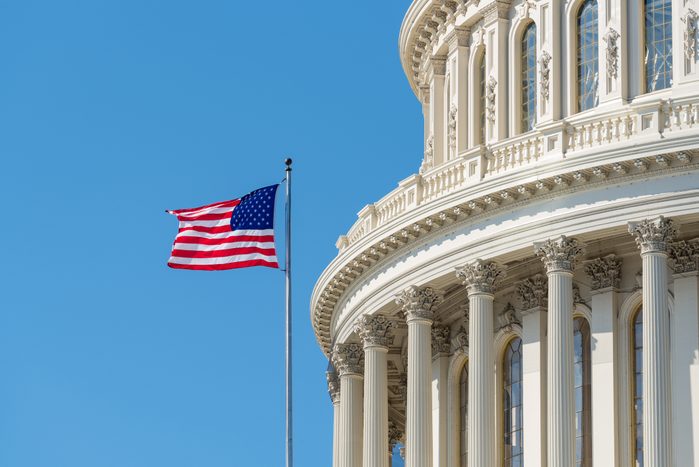
The Declaration of Independence states three key ideas
The Declaration of Independence is full of crucial points that built America’s foundation, but there are three key ideas the document expresses:
1. All men are created equal and have rights to life, liberty, and the pursuit of happiness.
2. It’s the government’s responsibility to protect those rights.
3. The people have the right to defend these rights for themselves and their fellow Americans.
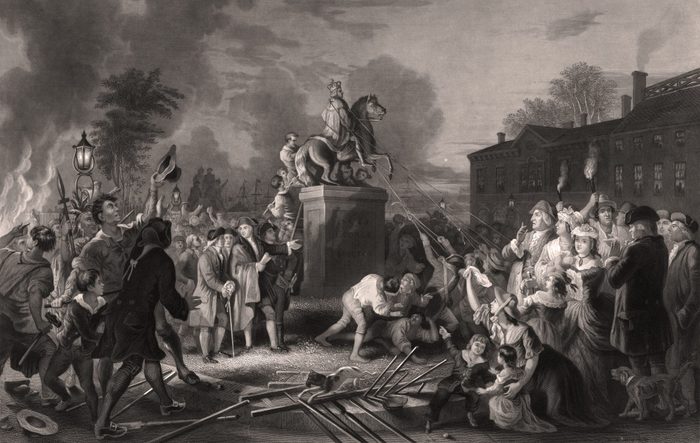
New York rioted when news of the Declaration spread
On July 9, the Declaration of Independence was read aloud by George Washington in City Hall Park, New York. The call for freedom instantly fueled the crowd’s excitement, inciting a riot to break out in the streets. As the crowd energized, it charged down to Bowling Green Park and toppled a statue of King George III. Later, this statue was melted and re-purposed as musket balls for the American army during the Revolutionary War. Interested in historical sites, like Bowling Green Park? These are the best American cities for history buffs.
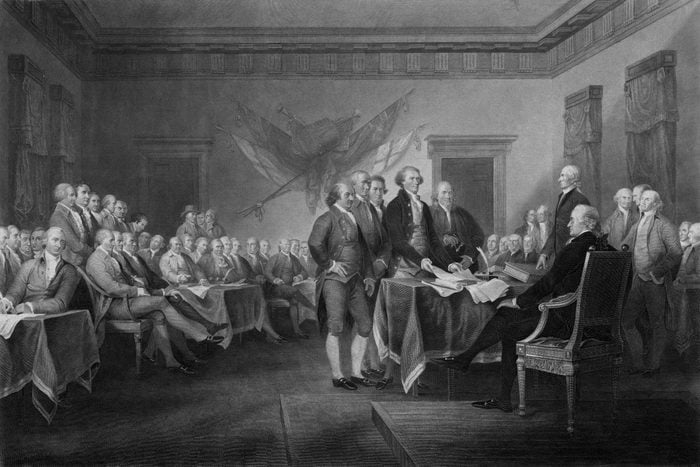
Richard Stockton was the only Congressman to recant his support for the Declaration
Richard Stockton was once a trailblazing patriot with the honor of signing the Declaration of Independence. However, Stockton later recanted his support for the revolution when he was arrested by British forces at the start of the war. In prison, Stockton faced starvation, cold temperatures, and harsh treatment. After five weeks behind bars, Stockton accepted a pardon from a British general and was released to his family. The one condition of his freedom? Stockton was forced to renounce his allegiance to the revolution and swear his loyalty to the king.
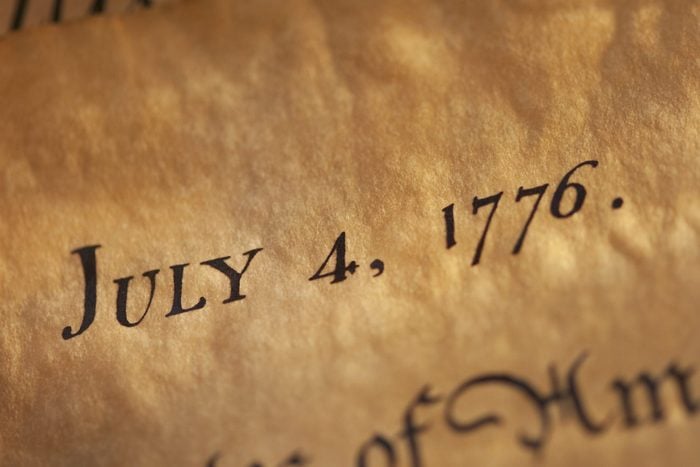
“Original Declaration of Independence dated July 4th 1776” is written on the back of the Declaration of Independence
No, it’s not the secret location of the treasure that Nicolas Cage has been hunting his whole life—stop thinking about the movie National Treasure! In reality, the words “Original Declaration of Independence dated July 4th 1776” is written upside down on the back of the document. While it is unknown who penned this line, the label helps to ensure that the original copy remains safely in the government’s hands today.
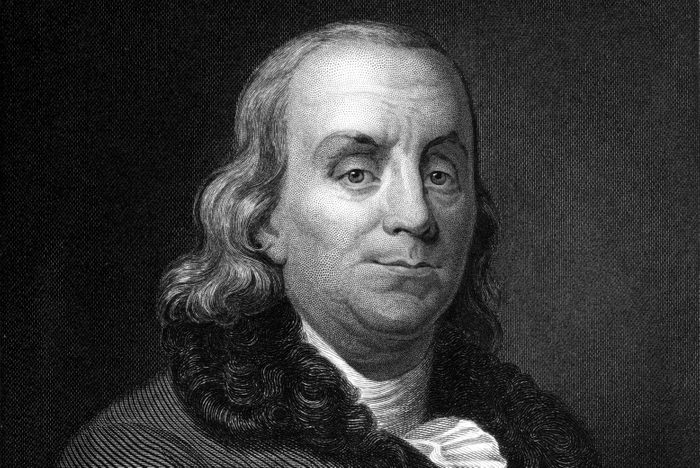
Benjamin Franklin was the oldest person to sign the Declaration of Independence
Benjamin Franklin was 70 years old when he signed the Declaration of Independence. For comparison, the youngest signer of the document, a South Carolina delegate named Edward Rutledge, was 26 years old. For those of you who don’t enjoy mental math, Franklin was 44 years older than Rutledge. His many years of experience as a political leader are likely the reason Franklin was appointed to the Committee of Five to help draft the Declaration. Fun history fact: Franklin also signed the Constitution.
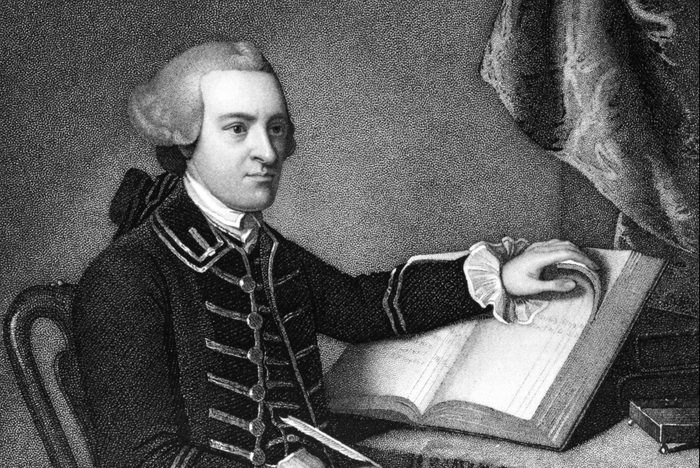
John Hancock has the biggest signature on the Declaration of Independence
Have you ever been asked to provide your “John Hancock” when a signature was needed? Well, now you know why. That saying comes from the man who has the largest signature on the Declaration of Independence. John Hancock, a Founding Father, was president of the Second Continental Congress and a passionate Patriot during the American Revolution. He was the first to sign the document because of his prominent role in the Second Continental Congress, and he took the opportunity to make his signature bold and known to the masses. Something else that should be known to the masses? How fun these 4th of July games are.
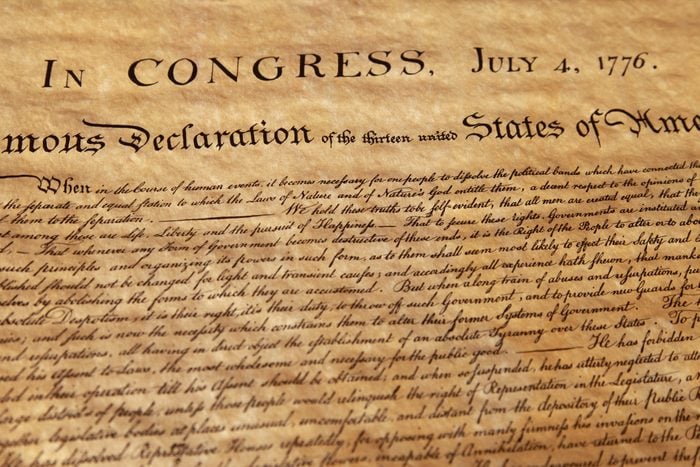
There are five sections of the Declaration of Independence
Yep, there are five sections—it’s not just a run-on document. These parts include the introduction, the preamble, two body sections, and a conclusion.
Now that you’ve brushed up on these facts about the Declaration of Independence, see how well you know the Constitutional amendments.
Written with additional contribution from Kelly Kuehn.
Sources:
- National Constitution Center: “10 fascinating facts about the Declaration of Independence”
- Library of Congress: “Dunlap Broadside [Declaration of Independence]”
- The Mercury News: “Rare copy of Declaration of Independence survived Civil War hidden behind wallpaper”
- CBS News: “Lear Buys Declaration of Independence”
- WBUR: “Hiding the Constitution, Declaration of Independence During World War II”
- Politico: “The Secret Plan to Protect America’s Founding Documents During WWII”
- New York News Publishers Association: “Famous New Yorker: Robert R. Livingston”
- ConstitutionFacts.com: “Drafting the Declaration of Independence”
- CNN: “The Declaration of Independence: Six things you (probably) didn’t know”
- New York City Department of Parks & Recreation: “The Oldest Parks (1686-1811)”
- History.com: “9 Things You May Not Know About the Declaration of Independence”
- Business Insider: “The story of the only man who signed the Declaration of Independence and recanted his signature”
- ConstitutionFacts.com: “Fascinating Facts About the Declaration of Independence”
- The Franklin Institute: “Benjamin Franklin and the Declaration of Independence”
- National Archives: “The Declaration of Independence: A History”
- Britannica: “Declaration of Independence Key Facts”
- USHistory.org: “John Hancock”
